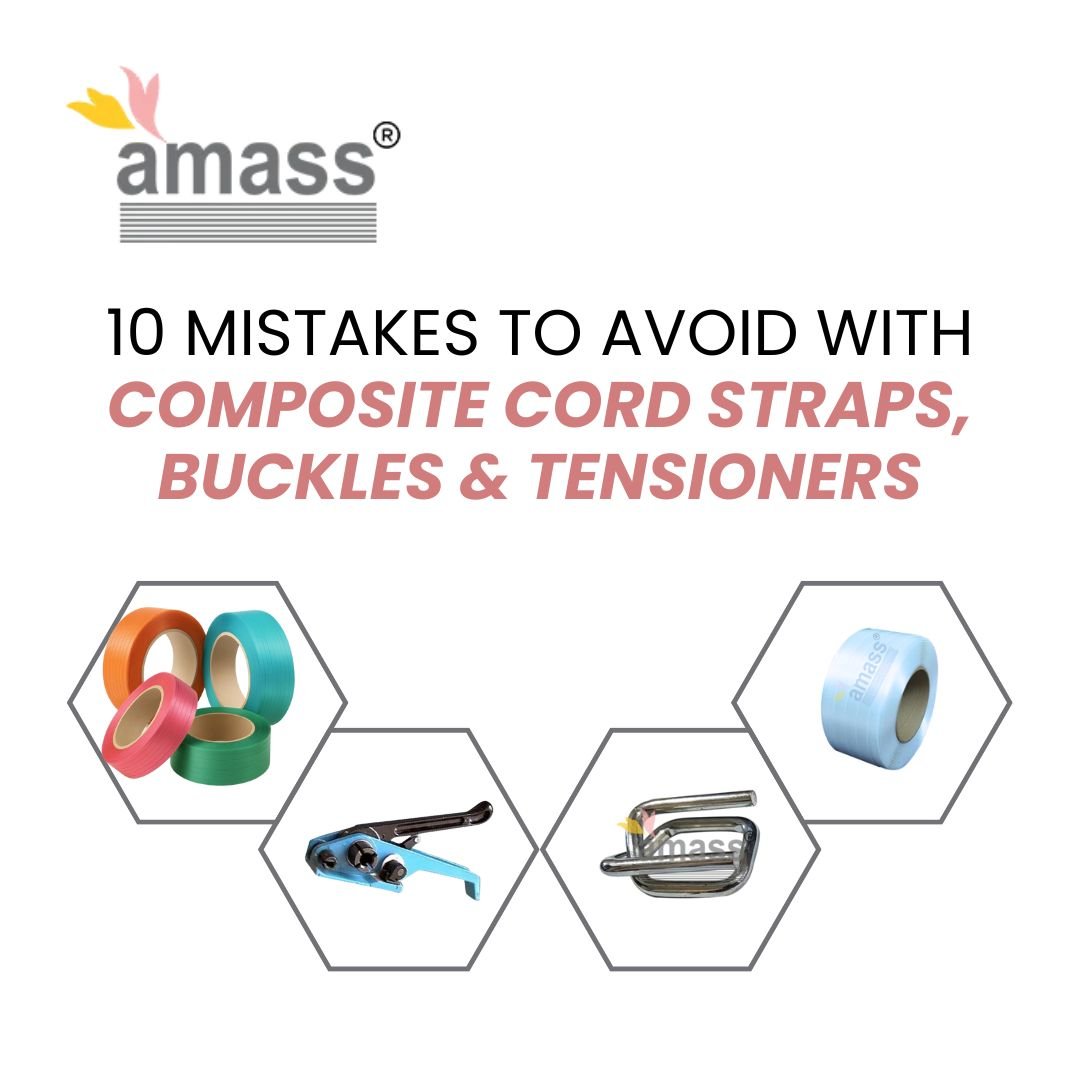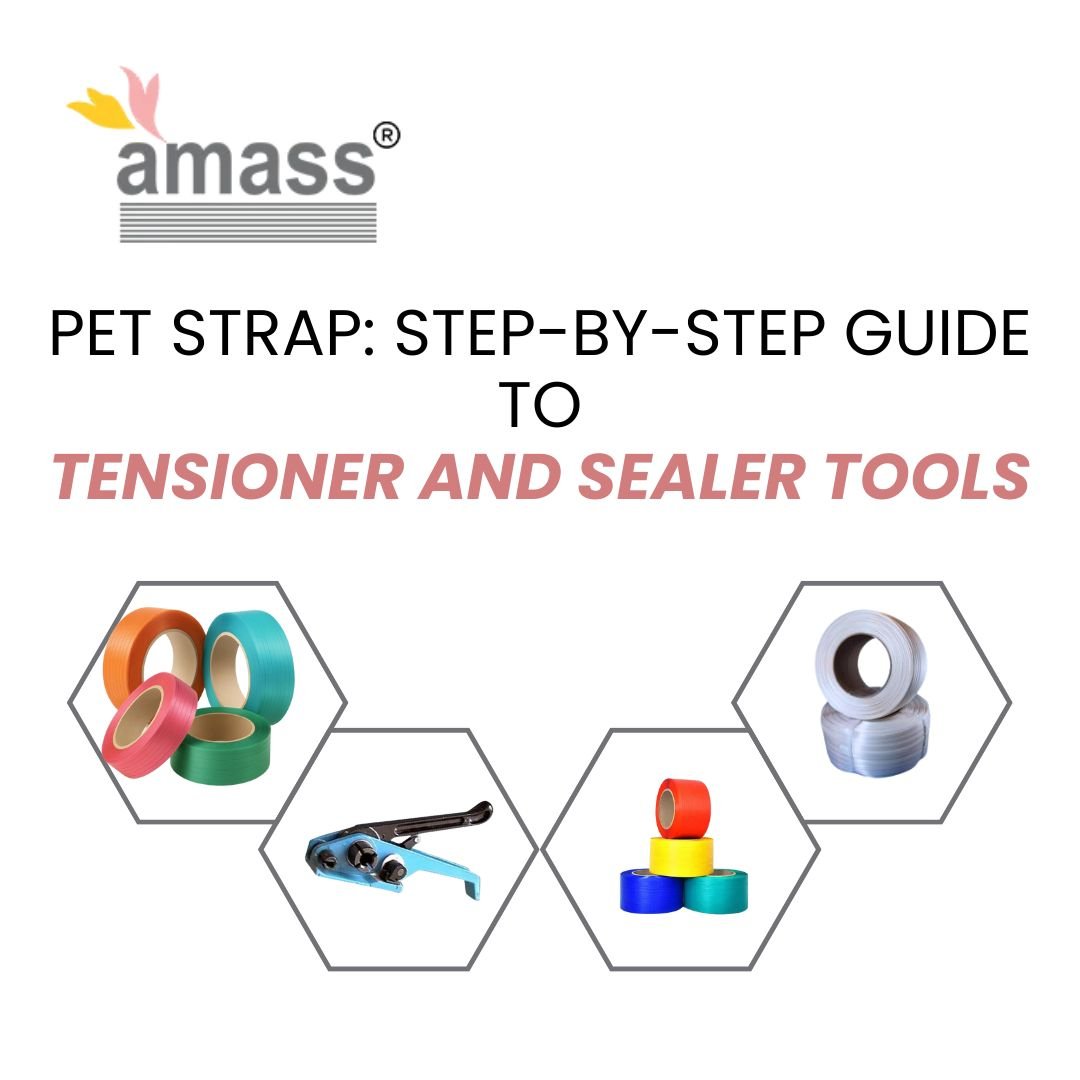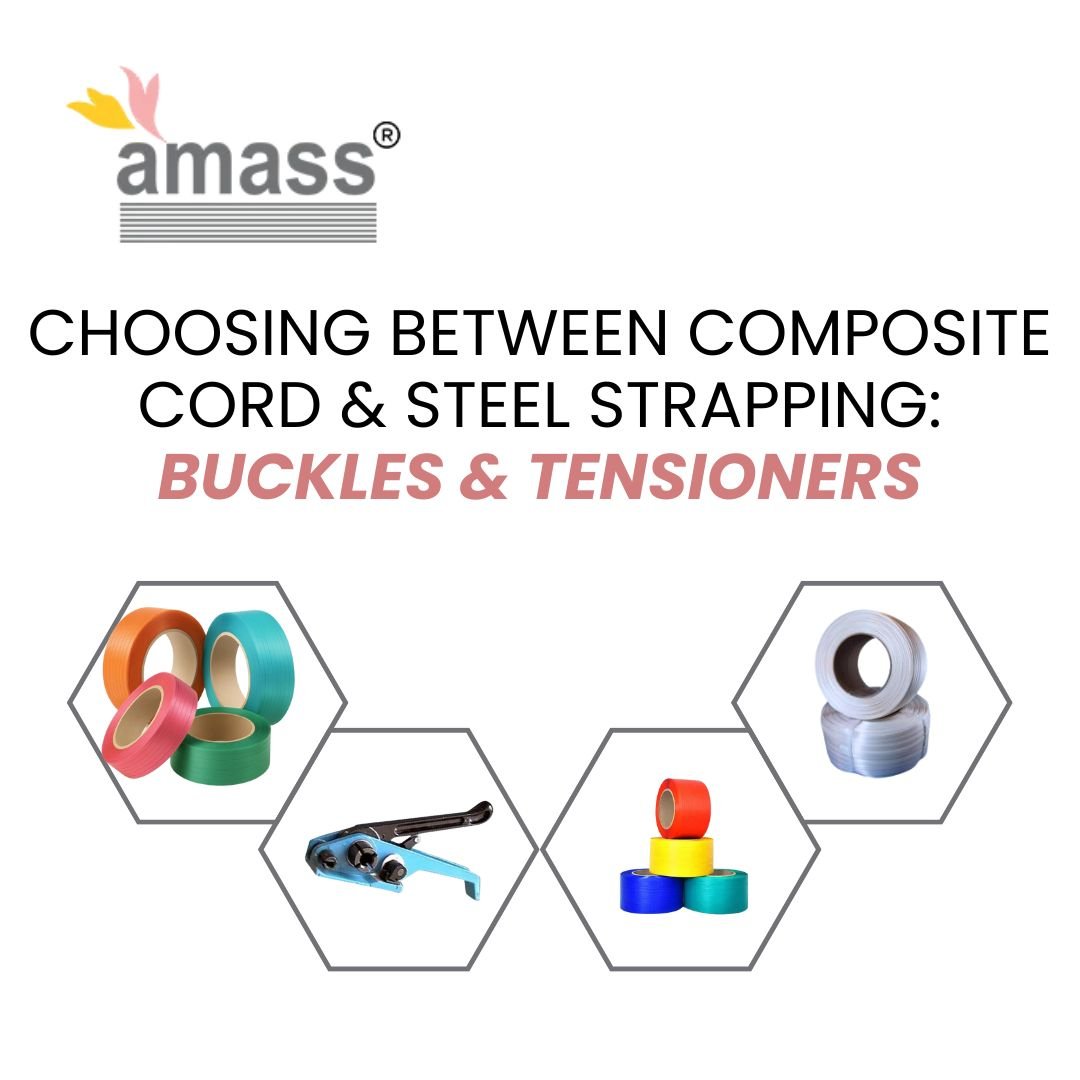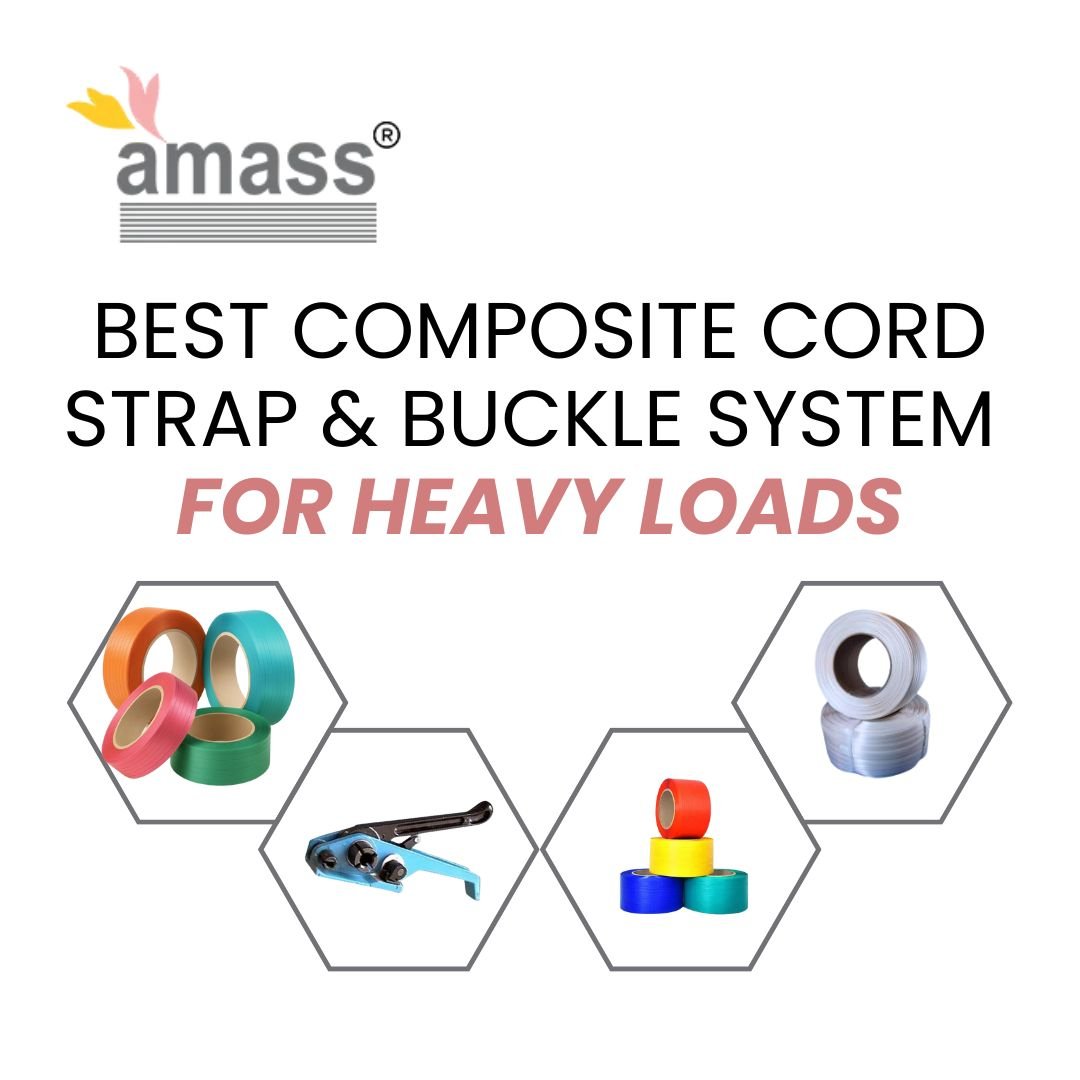10 Mistakes to Avoid with Composite Cord Straps, Buckles & Tensioners

PET Strap: Step-by-Step Guide to Tensioner and Sealer Tools
November 15, 2025
Cost-Benefit: Cord Strap System vs. Traditional Cargo Securing
November 15, 2025Introduction
Most cargo damage doesn’t happen because strapping fails—it happens because someone made a preventable mistake during setup. Wrong buckle size, bad tensioning, twisted straps, worn components. These errors cost you money in damaged goods, delays, and returned shipments. This guide walks through the ten most common mistakes with composite cord strapping systems and shows you exactly how to avoid them. Fix these now and your loads will stay secure from warehouse to destination.
Using the Wrong Strap or Buckle Size
Buyers often match strap width to buckle size and assume they’re compatible. Width matters, but load rating matters more. A 19mm buckle designed for 800kg can’t safely hold a 19mm strap rated for 1500kg—the buckle becomes the weak point.
System strength depends on the lowest-rated component. If your strap can handle 1650kg but your buckle maxes out at 1200kg, your real capacity is 1200kg. Check both linear breaking strength (strap alone) and system breaking strength (strap plus buckle together) before you commit to any combination.
Matching Components for Real-World Loads
Don’t guess based on what looks right. Ask your supplier for documented system strength values that show the strap-buckle pairing under actual load conditions. If they only list strap strength, you’re missing critical data.
Over- or Under-Tensioning the Strap
Over-tensioning damages the strap, deforms the buckle, and can crush sensitive cargo. Under-tensioning lets the load shift during transport, loosening the joint and compromising security.
Straps stretched beyond their capacity are more likely to snap under pressure. If you apply 50kg of tension on a strap with a 60kg maximum, you have almost no capacity left for dynamic loads like braking or turning. Over-tensioning also wears out equipment faster—motors, gears, and tensioning components fail sooner when they consistently operate at excessive levels.
Under-tensioned straps allow movement. Movement creates friction, friction creates heat, and heat weakens polyester and composite materials over time.
Getting Tension Right
Use calibrated tensioning tools and follow manufacturer guidelines for your specific strap type. Manual tensioners work for lighter loads, but pneumatic or battery-powered tools deliver consistent tension for heavy-duty applications. Train your crew to recognize proper tension by feel and by tool readings—both matter.
Incorrect Buckle Threading and Assembly
Messy threading reduces system strength by up to 33% compared to clean, proper threading. The way the strap enters and exits the buckle changes how force distributes across the joint. Poor threading concentrates stress at contact points, weakening grip and accelerating wear.
Threading matters more than most operators realize. The buckle’s internal prongs need full contact with the strap to grip effectively. If the strap angles wrong or threads unevenly, those prongs can’t do their job.youtube
Step-by-Step Threading
- Feed the strap through the buckle so it sits flat against the prongs
- Ensure no twists or folds at entry or exit points
- Pull tension evenly—don’t jerk or angle the strap sideways
- Confirm the strap is centered in the buckle before final tensioning
Using Damaged or Worn Components
Fraying, rust, bent buckle legs, and cracked coatings all signal the end of a component’s useful life. Reusing damaged buckles is a false economy—the cost of one failed load exceeds the price of a hundred new buckles.
Rust starts small and spreads fast, especially on galvanized buckles exposed to moisture or salt. Bent legs mean the buckle already experienced overload and lost structural integrity. Frayed straps concentrate stress at weak points, making failure predictable.
Inspect before every use. If there’s visible damage, retire the component immediately.
Ignoring Environmental Conditions
Moisture, salt, and temperature swings accelerate component degradation. Galvanized buckles work fine indoors but corrode quickly in coastal or high-humidity environments. Phosphate-coated buckles add corrosion resistance and surface texture for better grip—critical for outdoor storage or marine applications.
Temperature extremes affect strap flexibility. Cold makes polyester brittle; heat reduces tensile strength. If you’re shipping through variable climates, spec components rated for the harshest conditions your cargo will face.
Coating Selection by Environment
- Indoor, dry warehouses: galvanized buckles work well
- Outdoor storage, humid climates: phosphate-coated buckles last longer
- Marine or coastal shipping: phosphate coating is essential to prevent rapid rust
Twisting or Misaligning Straps During Application
Twisted straps don’t lose as much strength as most operators think—multiple twists are needed to see significant capacity reduction. But even minor twisting concentrates stress unevenly and accelerates wear at the buckle contact points.youtube
Misalignment matters more. When the strap enters the buckle at an angle, the grip weakens and the strap can slip under load. Keep straps flat and centered from anchor point through buckle to cargo.
Alignment Best Practices
Run your hand along the strap after tensioning. You should feel smooth, even contact with no bunching or rolling. If the strap twists naturally due to coil memory, unroll more length and let it relax before application.
Neglecting Regular Inspection and Maintenance
Daily or pre-shift inspections are standard for high-use applications; monthly inspections work for moderate use; annual inspections are the bare minimum. Severe service conditions—extreme temperatures, heavy loads, or chemical exposure—require weekly or even daily checks.
Inspect for visible damage: fraying, cuts, rust, bent components, or discoloration. Check buckles for deformation or coating wear. Test strap flexibility—stiff or brittle sections indicate UV or heat damage.
Clean components after use in dusty or corrosive environments. Store straps and buckles in dry, climate-controlled spaces when not in use to extend service life.
Using Inadequate or Low-Quality Tensioning Tools
Manual tensioners work for lighter loads but introduce variability—different operators apply different force levels. Battery or pneumatic tensioners deliver consistent tension across multiple applications, reducing human error.
Low-quality tools wear out faster, slip during tensioning, or fail to cut cleanly, leaving rough strap ends that fray quickly. Tools with textured prongs grip better and reduce slippage. Built-in cutters eliminate the need for separate knives and speed up the process.
Match your tool to your strap type. Composite strapping needs all-in-one tensioners with integrated cutting mechanisms; PP and PET strapping work with poly tensioners and separate cutters.
Mixing Strap, Buckle, and Tool Brands
Different manufacturers use different tolerances, coatings, and materials. A strap from one supplier might not thread cleanly through another supplier’s buckles. The prongs might not grip properly, or the buckle might be too narrow or too wide for optimal contact.
Mixing brands introduces unpredictability. System strength ratings assume matched components from the same manufacturer. When you mix, those ratings no longer apply—you’re guessing at capacity instead of knowing it.
Source complete systems from one trusted supplier. You’ll get documented compatibility, consistent quality, and technical support that understands how the components work together.
Lack of Training and Awareness on Proper Use
Operator error causes more strapping failures than defective materials. Workers who don’t understand system strength will over-trust strap ratings and under-spec buckles. Crews who never learned proper threading techniques will create weak joints without realizing it.
Training pays off immediately. Operators who know how to tension correctly, thread cleanly, and inspect thoroughly waste less material and create stronger, more reliable cargo restraints.
What Training Should Cover
- Difference between linear and system breaking strength
- How to match strap, buckle, and tool specifications
- Proper threading and tensioning techniques
- Signs of component damage or wear
- Inspection frequency and documentation
Frequently Asked Questions
How often should I replace composite straps and buckles?
It depends on usage frequency and environmental exposure. For daily use in normal conditions, inspect monthly and replace annually. For severe conditions—heavy loads, outdoor storage, or corrosive environments—inspect weekly and replace every few months or sooner if damage appears.
Can I reuse buckles after cutting off the strap?
Single-use buckles deform during initial tensioning and shouldn’t be reused. Reusable buckles exist but require inspection after each cycle for bent legs, coating damage, or deformation. When in doubt, replace it—a new buckle costs less than damaged cargo.
What’s the best way to store composite strapping between uses?
Keep straps and buckles in dry, climate-controlled spaces away from direct sunlight and moisture. UV exposure degrades polyester over time, and humidity accelerates rust on metal buckles. Hang straps to prevent kinks or coil them loosely without tight bends that create stress points.
Why does my strap slip through the buckle after tensioning?
Either the buckle coating is too smooth for grip, the buckle size doesn’t match the strap thickness, or you didn’t thread it correctly. Phosphate-coated buckles offer better friction than smooth galvanized ones. Check that the strap is centered and flat in the buckle with full prong contact before tensioning.
Conclusion
Fix these ten mistakes and your strapping system will perform the way it’s designed to: reliably, consistently, and without surprises. Most failures come from operator error, not defective components. Match your strap and buckle ratings, tension correctly, inspect regularly, and train your team on proper technique.
Audit your current strapping process this week. Identify which mistakes you’re making and fix them before your next shipment.
Amass-Strap designs composite cord strapping systems where straps, buckles, and tensioners work together as tested, matched components. We document system strength—not just linear ratings—so you know exactly what capacity you’re working with. Our phosphate-coated buckles deliver superior grip and corrosion resistance for demanding applications.
Visit amass-strap.com to see our complete range of composite strapping solutions with full technical specifications, or contact us to discuss your specific load requirements and get recommendations for matched components that eliminate gut elimination guesswork.




